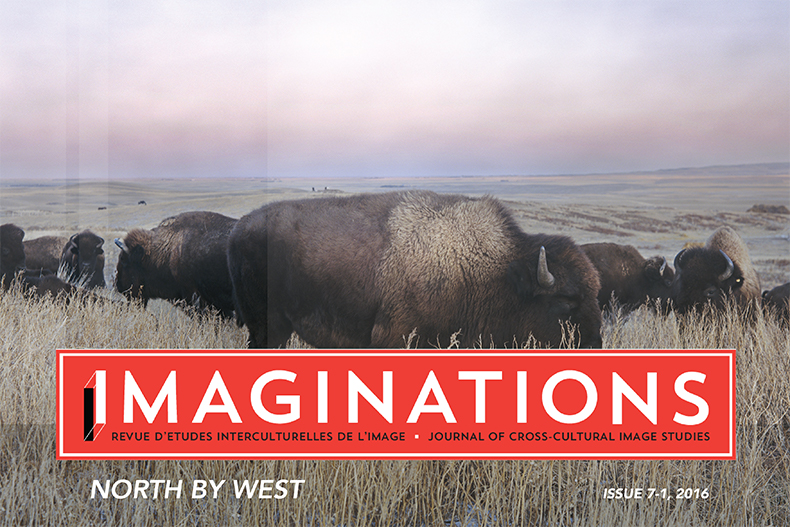Border Lines and Crossing Points: A Response to Andreas Rutkauskas’ Photographs of the Canadian-U.S. Border
DOI:
https://doi.org/10.17742/IMAGE.NBW.7-1.11Abstract
Abstract | Written in response to the project Borderline by photographer Andreas Rutkauskas, this essay reflects on the historic, cultural, political, and geographical tensions visually and viscerally experienced along the Canada-US border. Both as an emblem and physical manifestation of the modern nation-state that maintains its authority through the control and surveillance of its boundary, the Canada-US borderline evokes questions about vernacular and official land use, indigenous and settler territorial rights, and the cultural identity inherent in place. Responding to the border points as fraught cultural spaces, Rutkauskas uses his camera to reflect on the visual and spatial similarities—and outright banal ordinariness—found along the vast boundary. Focusing on the western-Canadian portion of the Borderline series, this essay understands Rutkauskas’s photographs as a reflection on the continued human transformation of the landscape. Ultimately, this project provokes the viewer to ask what it means to share an environment divided not by ecology, architecture, or ethnicity but by the arbitrariness of national authority.
Résumé | Écrit en réponse au projet Borderline du photographe Andreas Rutkauskas, cet essai est une réflexion sur les tensions historiques, culturelles, politiques et géographiques visuellement et viscéralement vécues le long de la frontière Canda-États-Unis. A la fois un emblème et une manifestation physique de la nation-état moderne qui maintient son autorité à travers le contrôle et la surveillance de ses frontières, la frontière entre le Canada et les États-Unis soulèvent des questions sur l’utilisation du sol officielle et vernaculaire, les droits autochtones et les droits des colons en rapport avec le territoire et l’identité culturelle inhérente. Considérant les points de passage entre frontières comme des espaces culturels tendus, Rutkauskas utilise son objectif pour réfléchir aux similarités visuelles et spatiales- et à l’ordinaire banal- que l’on trouve au long de cette vaste frontière. En se concentrant sur la section de la série Borderline qui porte sur l’ouest canadien, cet essai interprète les images de Rutkauskas comme une réflexion sur l’intervention humaine constante sur l’environnement. Ultimement ce projet pousse le spectateur à découvrir ce que signifie partager un environnement séparé non par l’écologie, l’architecture ou l’ethnicité mais par une autorité nationale arbitraire.
Downloads
Published
How to Cite
Issue
Section
License

This work by https://journals.library.ualberta.ca/imaginations is licensed under a Creative Commons 4.0 International License although certain works referenced herein may be separately licensed, or the author has exercised their right to fair dealing under the Canadian Copyright Act.




